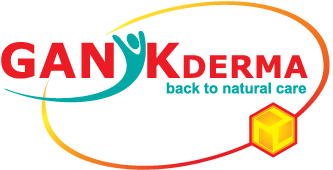Hypertrophic scars and keloids contain large amounts of collagen, hypertrophic scars contain the collagen type III oriented parallel to the epidermal surface with abundant nodules containing myofibroblastes and a large amount of acid mucopolysaccharides.
In contrast, keloid tissues are composed mainly of collagen type I and type III disorganized, containing bundles of collagen with no lumps or excess myofibroblastes.
Both types of scars are caused by large amounts of protein production that belong to the group of fibroblast growth factors.
Hypertrophic scars
Hypertrophic scars and keloids occur in abnormal wound healing process when tissue regeneration is affected – is the response of connective tissue to trauma, inflammation or burns. Hypertrophic scars occur when excessive scar tissue develops at an incision or wound. The color red, thick texture and are supradenivelate from surrounding tissues. Often such a scar will become flatter, softer, while acceptable in appearance. Hypertrophic scars occur after 4 to 8 weeks after wound closure with an excess of blood or infection, as well as other skin injuries, have a rapid growth phase that lasts about 6 months, then gradually regress for several years, leaving a flat scar without symptoms.
Keloids scars
Keloids scars varies in color and texture of the surrounding tissues. Unlike hypertrophic scars, they grow over the edges of the wound, looking like a tumor. Keloids scars can grow for several years after minor injuries to the chest or can occur spontaneously in the absence of any injury, sometimes accompanied by pain. Keloids scars persist for a long time and not regress spontaneously.
Hypertrophic scars and keloids: clinical differences
| Hypertrophic scars | Keloid scars | |
| Incidence | 40 to 70% after surgery, more than 91% after burns | 6 to 16% of the African population |
| Equal distribution in both sexes, increased incidence in the second and third decades of age | ||
| Common locations | Shoulders, neck, sternum, knee, ankle | Chest, shoulders, earlobes, upper arms, cheeks |
| Evolution | 4 to 8 weeks after the appearance of the wound, rapid phase of growth (about 6 months), then regression for several years | Several years after minor injury, or spontaneously. Continuing a long time. Not regress. |
| Appearance | Not exceed initial wound edges | Beyond the initial wound edges (if applicable) |
Treatment of hypertrophic and keloids scars
| Treatment | Use | Indications, Remarks |
| Pressure therapy | Continuous pressure (15-40 mmHg), at least 23 h / day for at least 6 months | Hypertrophic scars after burns Ear keloids scars Unproven efficacy Discomfort to the patient |
| Silicone pads | Over 12 h / day, at least 2 months | Prevention of hypertrophic and keloids scars Without effective on mature hypertrophic and keloids scars |
| Flavonoids gels | 2 times / Day for 4 – 6 months | Have limited effectiveness |
- Corticosteroids;
- Topical application of silicon;
- Treatment by pressure;
- Surgery;
- Skin graft to close the wound with minimal tension.
In the treatment of hypertrophic and keloid scar gels and ointments are also used with topical application, they contain various plant extracts and oils that penetrate the skin and releases substances with anti-inflammatory properties.
GANIKDERMA® in treatment of hypertrophic and keloids scars
- Emollient: restore skin barrier function;
- Antioxidant: inhibits proliferation of scar fibroblasts;
- Anti-inflammatory: flatten hypertrophic scars;
- Improve stains: the olive oil and sunflower are used in many products to reduce skin hyperpigmentation.
Massaging the hypertrophic scar or keloids with GANIKDERMA® Ointment, reduce tensions in these tissues ensuring increased permeability and decreased interstitial fluid viscosity.
